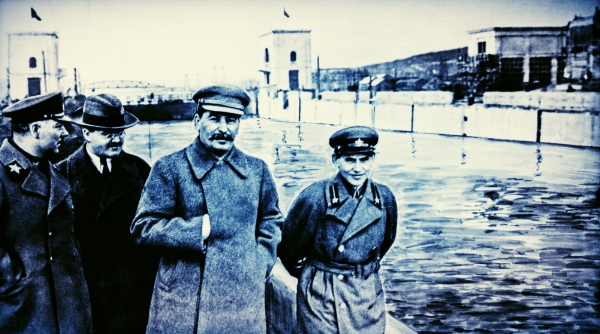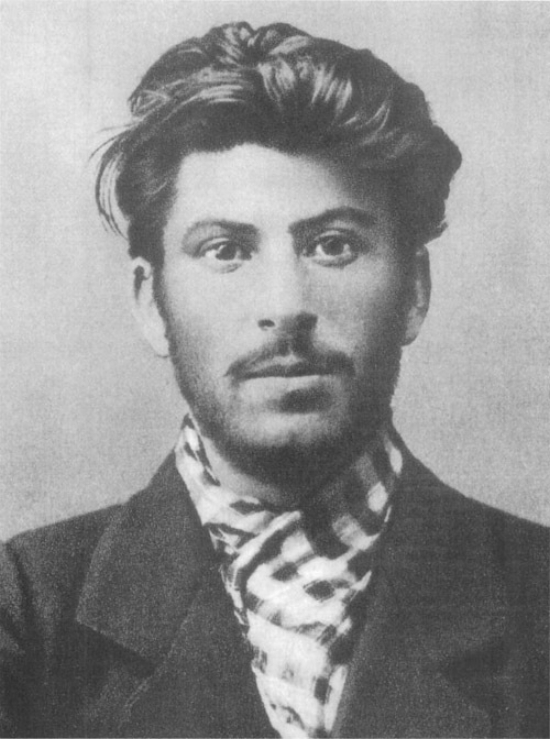Organized Fun, the Olympic Games, parades, the aesthetics of the Cirque du Soleil, fireworks (face it, they are dull), and just about anything to do with sport are about as low as it is possible to get on the list of things I enjoy. I was, therefore, a natural pick to write about the opening ceremony for the Sochi Games. Thank you, NRO!
So there I was on Friday evening, not in Sochi (thank you, NRO travel budget!), but on my sofa in New York City, watching as NBC showed America the recording of an event that everyone else had seen hours before. No matter; we had already shared in an enjoyable prelude played out through Twitter, BuzzFeed, that friend who e-mails you stupid photographs, and the rest of today’s media giants — double toilets, unfinished hotel rooms, bugged showers, the slaughter of stray dogs, epic corruption, a $51 billion price tag, and the announcement from Sochi’s mayor that there were no gays in his town — that suggested that these Olympics might be more entertaining than most. Who now remembers Albertville?
The evening began with Bob Costas chatting away in what looked like a room in a Golan-Globus Fortress of Solitude. There was an Obama interview. For those in the dark about Russia’s history, an NBC narrator described seven decades of Soviet despotism, mass murder, gulag, and evil empire as a “pivotal experiment,” a mealy-mouthed, carefully neutral description that made Walter Duranty’s infamous omelets look like a fearless exercise in speaking truth to power.
The ceremony itself opened rather nicely with a young girl running through the Cyrillic alphabet, using each letter to introduce someone or something from Russia’s past. Let’s be fair; this would not have been the moment for Russia — or any nation — to air its dirty Lenin, and Russia did not. Stalin’s C (as I said, Cyrillic) would have to wait for another night. Instead we were treated to a recital of some of the best of Russia’s heritage, including Chekhov, Malevich, Kandinsky, Nabokov (Nabokov!), and some icons of my own space-obsessed childhood, Gagarin and Lunokhod, that plucky little motorized bathtub that crawled across a small slice of the moon in 1970. More disreputably, the organizers slipped in a boast that the Russians had invented television, a claim that did not slip past half-Scottish me and would have annoyed John Logie Baird, the Scotsman whose achievement this really was.
Let Scotland’s Daily Record take up the tale:
“During a video taking viewers through Russia’s alphabet, a row of TV screens appeared next to the letter T and a picture of Russian-American inventor and engineer Vladimir Zworykin . . . Scots commentator Hazel Irvine was quick to reassure viewers that the achievement still belonged to her home country immediately after the clip finished.”
This view of history, at ease with elements of both the Soviet past and what preceded — and indeed opposed it — and happy to play fast and loose with accuracy was a foretaste of what was to come.
Yes, there were fireworks. Whatever.
The young girl was duly hoisted up for a flight across an impressive representation of Russia’s vast and varied landscape. In a remarkable display of diplomatic restraint, it did not include any stretches of landscape currently belonging to any other country.
Finally came the technical glitch (or, if you prefer, the last hurrah of determined Trotskyite wreckers) that schadenfreudians — out in force for these Olympics — had been so eagerly waiting for. One of the five giant snowflakes that were meant to flower into Olympic rings, well, flaked, although not, reportedly, on the Potemkin footage that played on Russian TV (oh come on, you knew there was going to be a reference to that village somewhere in this piece).
The athletes emerged (I think) from some underground lair into the stadium, each team led by a snow hottie topped with a kokoshnik (look it up; I did), as they sauntered in, nation after nation after nation after nation, Lithuanians in two shades of sharpie green, mighty San Marino, some euphemism for Taiwan, and, of course, USA! USA! decked out in Ralph Lauren cardigans that would have made Betsy Ross wish that she had just stuck to plain blue.
And what were the Germans wearing?
It sounded to me like the bunch from Belarus got a very big cheer and the Ukrainians, too. Russians have a very expansive definition of home team.
The centerpiece of the show was a pageant meant to represent the sweep of the latest approved version of Russian history. And some of it was very striking, even lovely, not least a giant, silvery troika, so evocative of the country’s vast, snowy landscapes, and, for that matter, the finest of all descriptions of Russia, “speeding like a troika” in Gogol’s Dead Souls, a passage that ends, a little ominously for the rest of us, like this:
Whither then, are you speeding, O Russia of mine? Whither? Answer me! But no answer comes — only the weird sound of your collar-bells. Rent into a thousand shreds, the air roars past you, for you are overtaking the whole world, and shall one day force all nations, all empires to stand aside, to give you way!
Nikolai Gogol (1809–1852), of course, was Ukrainian-born.
Nobody ever said that Russian history was uncomplicated, but the spectacle in Sochi was clearly designed to smooth things out a bit — no, a lot — something very much in keeping with the wider Putin project in which all of Russian history, Czarist, Soviet, and whatever it is now, is crammed into a single, supposedly unifying past in which all Russians, regardless of ideology, did the right, patriotic thing for a nation that was always a force for good.
Thus we witnessed onion domes, Cossacks, Peter the Great, the ballroom scene (beautifully done) from War and Peace, followed by glimpses of turn-of-the century technological progress cleverly used to pave the way for the passage dedicated to that “pivotal experiment.” This was presented primarily as an acceleration — continuity, you see — of the country’s drive to industrialization and modernity all drenched in red (light, not blood) and crowned by the shapes of constructivism’s bold geometry, including what looked like fragments of Tatlin’s Tower, the monument to the Third International that — like communism’s radiant future — never made it past a very rough draft.
And what was this? Two giant heads, an enormous hammer, a vast sickle, excerpted, as it were, from the sculptress Vera Mukhina’s massive, sinister and, in its way, magnificent, Worker and Kolkhoz Woman (1937). To look at, it was wonderful, to think about, not so much. Imagine if Germans hosting a (modern) Olympics had included some of the iconography that their countrymen had used back in Berlin the first time round. That it is unthinkable in a way that Sochi’s sexed-up Soviet design was not speaks volumes — volumes filled with nothing good.
Later there was a sequence showing the supposedly kinder, gentler, Soviet Union that evolved after the tyrant whose name was not mentioned had left the scene, a sort of Russian Graffiti with music that somehow, I suspect, was not entirely representative of the early Brezhnev years.
Speeches? Of course there were speeches. The president of the International Olympic Committee said something about the Olympics embracing diversity (well, there had already been a performance by the fake lesbian pop duo t.A.T.u.) and explained that the games were “never about erecting walls to keep people apart,” which may or may not also have been a reference to Sochi’s eccentric restroom construction. After that, some Swan Lake danced by what seemed to be electric jellyfish, and a confusing sequence involving escapees from the set of Tron.
The Olympic torch arrived on the last leg of its long relay, a tradition since, ahem, Berlin, and was handed over by Maria Sharapova to a posse that included Alina Kabaeva, holder of an Olympic gold medal in rhythmic gymnastics, holder of a Russian parliamentary seat, and, if the rumors are true, holder of Vladimir Putin too. Yes, that’s right, rhythmic gymnastics . . .
The flame itself was lit by another parliamentarian, Irina Rodnina, three-time winner of an Olympic gold medal for figure skating and the author of a racist tweet about Barack Obama.
The gold medal for trolling was awarded to Vladimir Putin











